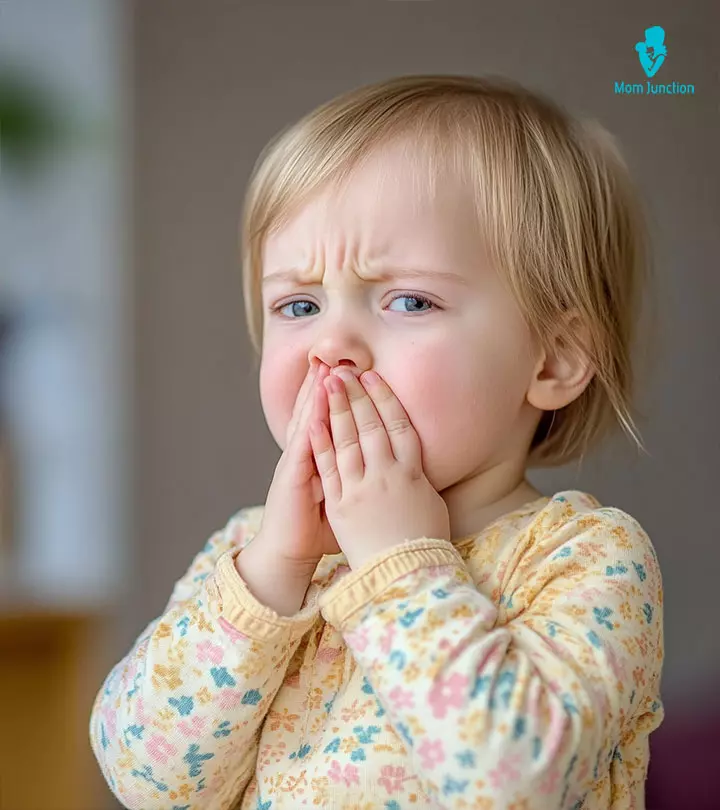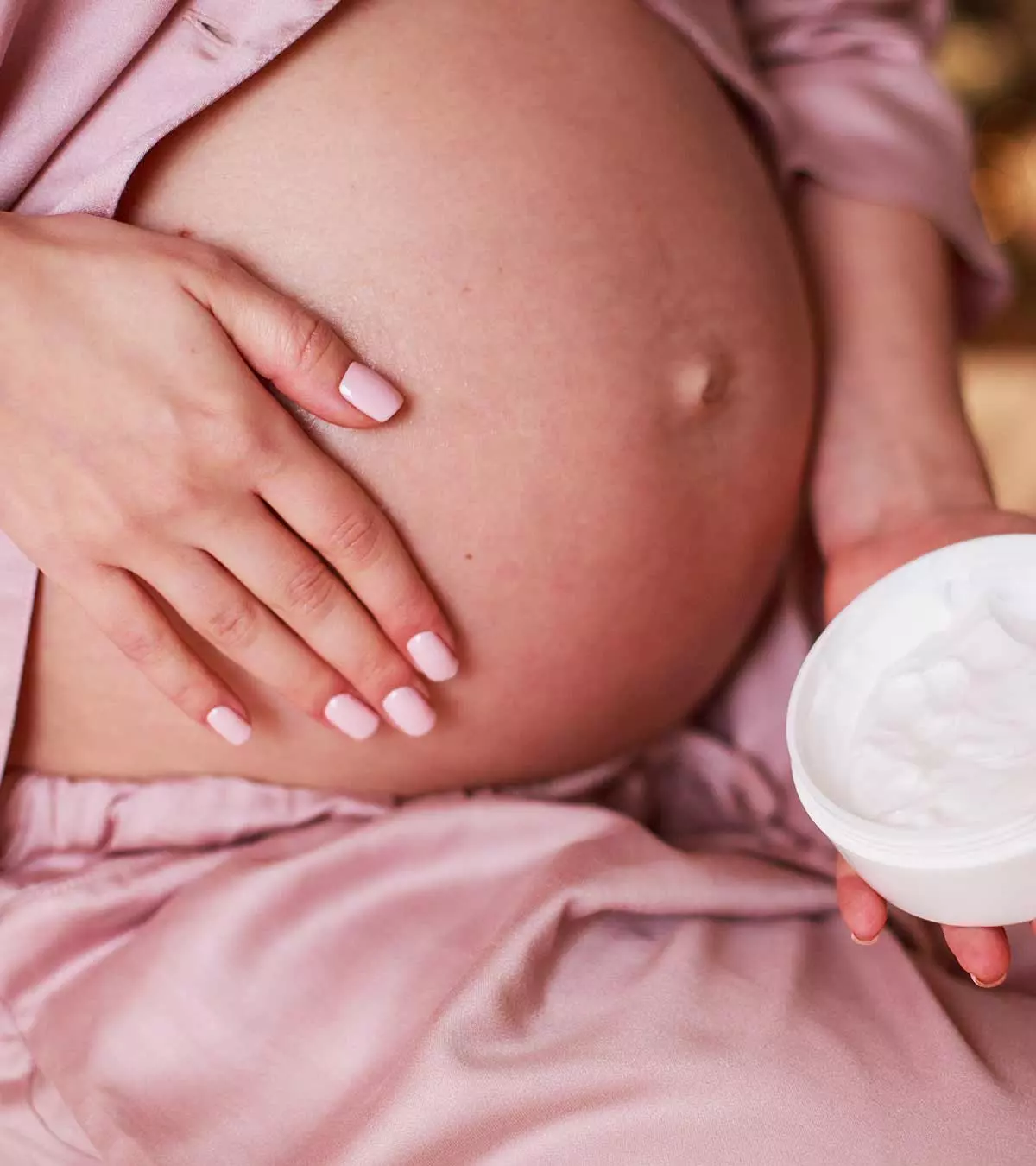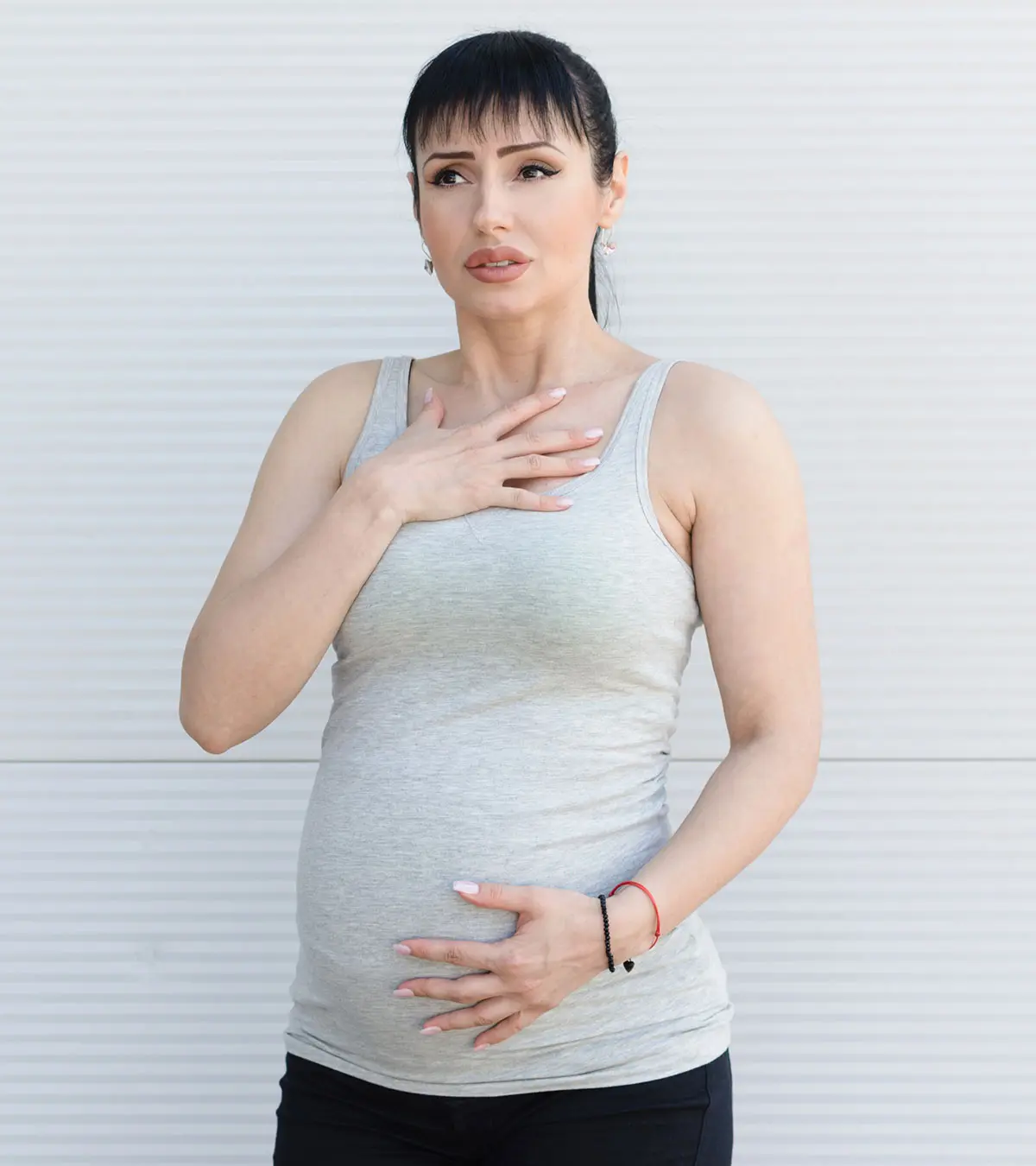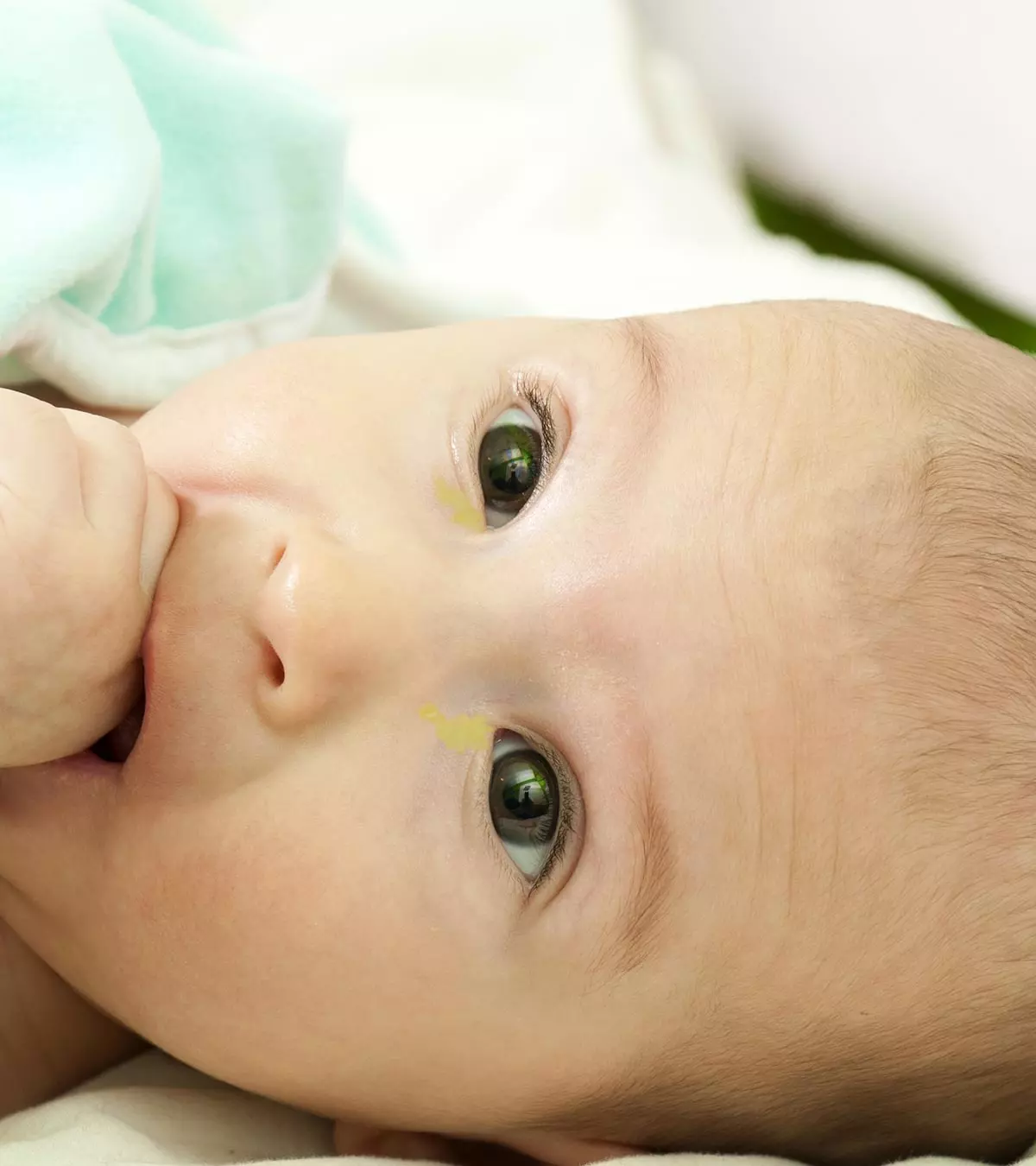
Watery discharge from the eyes can cause eyelids to become sticky. Generally, sticky eyes in infants are associated with the presence of white or yellowish crust along the corners of the eyelids. The condition, though common, may cause irritation, blurry vision, and discomfort to the infant as their eyes seem to be glued shut. Keep reading this post to know what may cause sticky eyes in infants, its symptoms, home remedies, treatment options, and a few preventive measures.
Key Pointers
- Sticky eyes are common in infants and are characterized by white or yellowish crusting, matted eyelashes, and watery eyes.
- Causes of sticky and watery eyes include blocked tear ducts, inflammation of the lacrimal sac, infection of oil or sweat glands, eye and respiratory tract infections, infantile glaucoma, corneal infections, nasal anomalies, tear duct malformations, and allergies.
- Medical treatment is necessary if redness, itchiness, pus, swelling, increased sensitivity, and fever occur. Treatment options include antibiotic eye drops, medications for underlying conditions, antihistamines, nasolacrimal duct massage, and probing.
- Home remedies and preventive measures can remedy sticky eyes in babies. These include using saline-based or warm wipes, giving tear duct massages, maintaining hygiene, avoiding allergens, and using separate towels.
Is It Normal For Babies To Have Sticky Eyes?
It is normal for babies to have sticky eyes, which often happens due to excessive tearing. One of the common causes of watery and sticky eyes is a blocked tear duct, which occurs in almost 20% of babies worldwide (1). Most causes of sticky eyes in newborns resolve during infancy. Therefore, do not panic if your baby’s eyes suddenly become watery and sticky.
What Are The Symptoms Of Sticky Eyes In Babies?
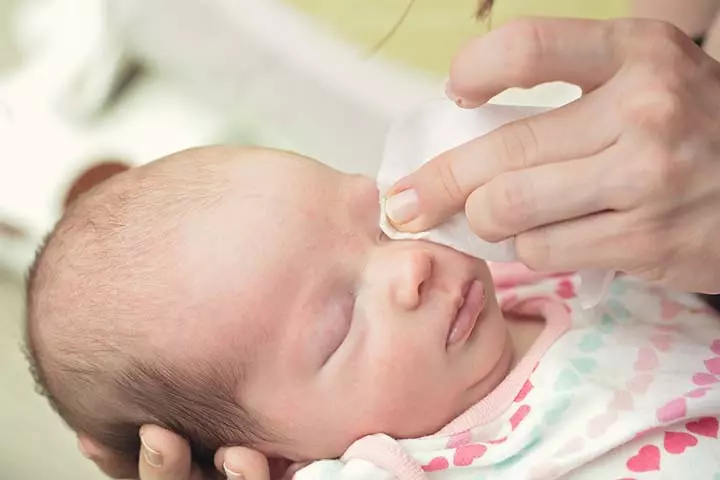
Image: Shutterstock
Sticky eyes are mostly presented by watery eyes, crusting at the corner of eyes or across the eyelid, and glued or matted eyelashes. It mostly happens in one eye but might occasionally occur in both eyes (1). It is important to note that the symptoms may vary from one child to the other. Therefore, if you notice persistent stickiness around your baby’s eyes or if the discharge worsens, seek medical care.
If the discharge from the eyes is not accompanied by other symptoms, such as redness, itching, or eye or eyelid swelling, then it is mostly not an infection.
When To See A Doctor?
See the doctor if the following symptoms accompany watery and sticky eyes:
- Redness of the eye
- Itchiness of the eye
- Fever
- Drainage of pus or red or green discharge from the eyes
- Swollen eyelids
- Eyes that are sticky for a long time
- Your baby seems sensitive to light
- Blinking excessively or constantly squeezing their eyes shut
- The side of their nose seems swollen
- the tear duct is still blocked by the time they reach one year of age
Rarely, the baby may have sticky eyes due to a tear duct malformation, which could cause a large bump at the inner corner of the eye (2).
See a doctor promptly if you notice this symptom.
Causes Of Sticky Eyes In Babies
The following conditions may lead to sticky eyes in babies.
- Congenital nasolacrimal duct obstruction (CNLDO): It is the medical term for blocked tear duct, which drains excess tears from the eyes into the nose. A blocked or malformed tear duct could cause tears to remain in the eyes for long, thus leading to stickiness (1). This condition in babies is often congenital, and 95% of CNLDO cases resolve by themselves within the first year of the baby’s life.
 Did you know?
Did you know?- Dacryocystitis: It is an inflammation of the lacrimal sac (tear sac) (3) . This condition is usually less common and often occurs as a complication of blocked tear ducts with 2.9% cases reporting dacryocystitis as well (4).
- Stye or hordeolum: A stye is a bump caused by an infection of the oil glands or sweat glands present at the rim of an eyelid. Sty in babies could have a yellow discharge (5), which might lead to the stickiness of the eyes.
- Conjunctivitis: The contagious eye infection can be bacterial, viral, or allergic. It leads to excess wateriness of the eyes (6), which can eventually lead to sticky eyes. The American Academy of Ophthalmology (AAO) reports that the prevalence of neonatal conjunctivitis in developed countries is estimated to be less than 0.5%. However, the numbers are estimated to be much more in the case of developing countries.
 Point to consider
Point to consider- Nasal anomalies: Congenital problemsiStructural or functional abnormalities present since birth, occurring during pregnancy. of the nasal passages, such as nasal polypsiSmall, benign growths in the nose or sinuses resulting from chronic inflammation or allergies. and nasal deformityiAbnormal shape or structure of the nose, typically caused due to an injury, genetics, or medical conditions. , might also cause excess tears (7). It might lead to stickiness in the eyes. The presence of a foreign body in the nasal passage might also make the eyes more watery and sticky.
- Upper respiratory tract infections: Common cough and cold or any other infections of the upper respiratory tract might cause watery eyes in babies (8), which may lead to sticky eyes.
- Allergies: Allergies can cause eyes to get itchy and watery (9), which might lead to sticky eyes. Pollen, food, pet fur, and even the fragrance of body lotions can lead to allergies.
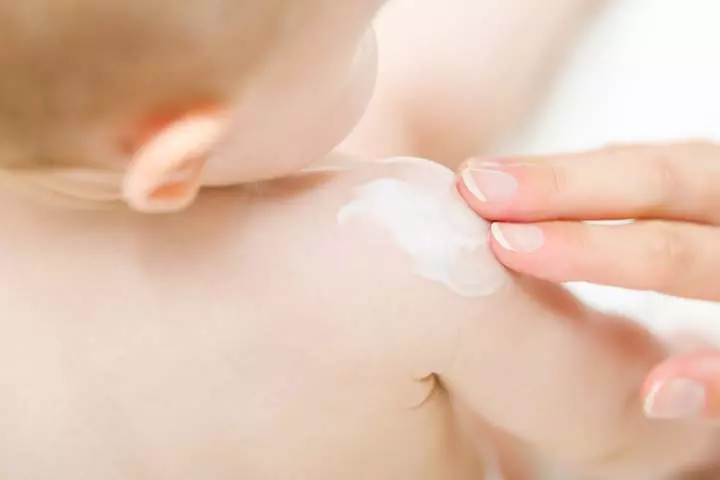
Image: Shutterstock
Rarely, infantile glaucomaiA condition where the fluid pressure inside the eyes may damage the optic nerve and impair vision. and corneal infections might cause watery and sticky eyes in babies(1).
Treatment For Sticky Eyes In Infants
The treatment aims at curing the condition behind watery and sticky eyes. The following treatment methods are usually used for babies.
- Nasolacrimal duct massage is a conservative and non-invasive approach to open up the blocked tear ducts . According to the American Academy of Ophthalmology, parents can do the massage by placing their index finger on the inner corner of the eye and the side of the nose. Press the spot gently and then slowly move fingers downwards along the edge of the nose. Perform ten strokes once in the morning and in the evening. Parents may discuss the steps and duration of the massage with the pediatrician (10).
- Nasolacrimal probing is suitable for children above the age of one year. Doctors insert a thin probe into the tear duct to remove the obstruction in the nasolacrimal duct. Doctors might choose this treatment only when tear duct massage has no effect (11).
- Antibiotic drops are commonly used to treat bacterial infections or neonatal conjunctivitis. They should be used only on a doctor’s prescription in the recommended dosage for the recommended duration (1).

Image: Shutterstock
- Medications for cough and cold: The doctor might prescribe oral drugs to treat an underlying condition such as an upper respiratory tract infection (12). The Centers for Disease Control and Prevention suggests that you may also use nasal saline drops and a suction bulb to get rid of mucus from the nose (8).
- Antihistamines might be prescribed by the doctor to treat allergy symptoms. However, the Seattle Children’s Hospital suggests using oral antihistamines if your child is two years or older. Antihistamine eye drops may be used in children above three years of age (13).
 Caution
CautionThe pediatrician will help you identify the causes and plan the treatment accordingly.
Home Remedies For Sticky Eyes In Babies
Eyes are a vital organ, and thus it is best to leave the treatment of sticky eyes in babies to a doctor. You may take some steps at home to help manage sticky eyes, especially when the condition is not severe.
- Use a sterile cotton ball dipped in saline to wipe off the crust or extra tears on the corner of the eye. Use a fresh cotton ball for each wipe.
- If the crust has formed causing the eyelids to be glued shut to each other, use a warm, soft washcloth to wipe the crust away.
- Consider warm compresses with a clean cloth soaked in lukewarm water over the affected eye for 5-10 minutes to loosen the crusting.
- You may regularly perform a tear duct massage at home after consulting a doctor.
 Quick tip
Quick tipCan You Prevent Sticky Eyes In Babies?
Sticky eyes cannot always be prevented, but you can minimize the risk by observing some precautions.
- Proper hygiene, like washing hands and keeping surroundings clean prevents exposure to allergens and pathogens. If a family member has an eye infection, then they should avoid contact with the baby. If primary caretakers develop an infection, then they should thoroughly wash their hands before touching the baby or their belongings.
- Maintain separate towels to wipe the baby’s body and face. It can help prevent the transfer of an infection or a surface pathogen from one part of the body to the eyes.
- Avoid exposure to allergens like pollen, dust, and strong scents.
- Ensure regular eye checkups to monitor your baby’s eye health and address any concerns promptly.

Image: IStock
Frequently Asked Questions
1. Are sticky eyes harmful for the baby?
Sticky eyes are not always harmful unless caused by a serious underlying medical condition. See a doctor if you have any concerns about your baby’s health.
2. Can I use eye drops for my baby’s sticky eyes?
Do not use eye drops without a doctor’s consultation. It is essential to diagnose the cause of sticky eyes before using any medication.
3. Does breast milk help sticky eyes?
Some studies have proven the efficacy of mother’s milk in treating sticky eyes in babies (14). However, this needs further research.
4. Is a baby’s sticky eye contagious?
If sticky eyes are caused by infections, like conjunctivitis or upper respiratory infections, then it could be contagious. Sticky eyes due to blocked tear ducts and allergies are not contagious.
5. How long does it take for sticky eyes to clear up in infants?
The time that sticky eyes take to clear up depends on the underlying cause. Infections and allergies may take a few days to a week to resolve, while blocked ducts may take longer (17).
6. Can sticky eyes recur in infants?
Yes, sticky eyes due to allergies and infections may recur every time the child encounters the condition.
7. Can my infant attend daycare if they have sticky eyes?
Your infant may attend daycare once the discharge has decreased. However, consulting a pediatrician before sending them to daycare is advisable.
8. Can sticky eyes in infants lead to other complications?
Usually, stick eyes do not lead to serious complications. However, if caused by herpes-mediated conjunctivitis, it may lead to scarring of the eye and vision loss when not treated properly (18).
Sticky eyes in infants are typical, caused due to water discharge from the eyes that become sticky, and this results in irritation and pain in babies. This condition has various causes, including CNLDO, nasal anomalies, respiratory infections, and allergies. However, the majority of these cases, depending on the cause, either resolve on their own through infancy or may be readily addressed. However, if your child’s eyes are swollen, itchy, red, or sticky for a longer duration, consult your baby’s pediatrician and ophthalmologist for proper diagnosis and treatment.
Infographic: Home Care For Sticky Eyes
Performing a tear duct massage could help manage sticky eyes in infants. Take a look at this infographic that will guide you through the procedure of tear duct massage. We have also listed the method to prepare the saline solution for cleaning the sticky eyes at home. Illustration: Momjunction Design Team
References
1. Aldo Vaggeet al., Congenital Nasolacrimal Duct Obstruction (CNLDO): A Review; Diseases
2. OnurIsmiet al., A rare cause of intermittent respiratory distress and epiphora in the newborn: congenital dacryocystocele; Gland Surgery
3. Prakash Ramakrishna, A Bacteriological Study of Dacryocystitis; Journal of Clinical and Diagnostic Research
4. Bhawesh Chandra Saha, RashmiKumari, and Bibhuti Prasanna Sinha, Clinical Outcome of Probing in Infants with Acute Dacryocystitis – A Prospective Study; Journal of Clinical and Diagnostic Research
5. Styes in Children; University of Rochester Medical Center
6. Rupesh Chawla, James D Kellner and, William F Astle; Acute infectious conjunctivitis in childhood; Paediatrics Child Health
7. Seong Chan Choi et al., Preoperative Computed Tomography Findings for Patients with Nasolacrimal Duct Obstruction or Stenosis; Korean Journal of Ophthalmology
8. Common Cold; Centers for Disease Control and Prevention
9. Zave Chad, Allergies in children; Paediatrics Child Health
10. Blocked Tear Duct Treatment; American Academy of Ophthalmology
11. Mihir Kothari et al., Congenital nasolacrimal duct obstruction: Should we continue lacrimal massage till 1 year or perform an office probing at 6 months? A clinical decision analysis approach; Indian Journal of Ophthalmology.
12. Upper Respiratory Infection (URI or Common Cold); John Hopkins Medicine
13. Eye – Allergy; Seattle Children’s
14. Sergio Verd, Switch from Antibiotic Eye Drops to Instillation of Mother’s Milk Drops as a Treatment of Infant Epiphora; Journal of Tropical Paediatrics
15. Sticky eye; Pregnancy Birth and Baby
16. Sticky eyes in babies and toddlers; Health Service Executive, Ireland
17. Eye – Pus or Discharge; Seattle Children’s
18. Conjunctivitis in Children; Stanford Medicine
Community Experiences
Join the conversation and become a part of our nurturing community! Share your stories, experiences, and insights to connect with fellow parents.
Read full bio of Dr. Atiqur Rahman Khan
Read full bio of Dr. Ritika Shah
Read full bio of Rohit Garoo
Read full bio of Shinta Liz Sunny








